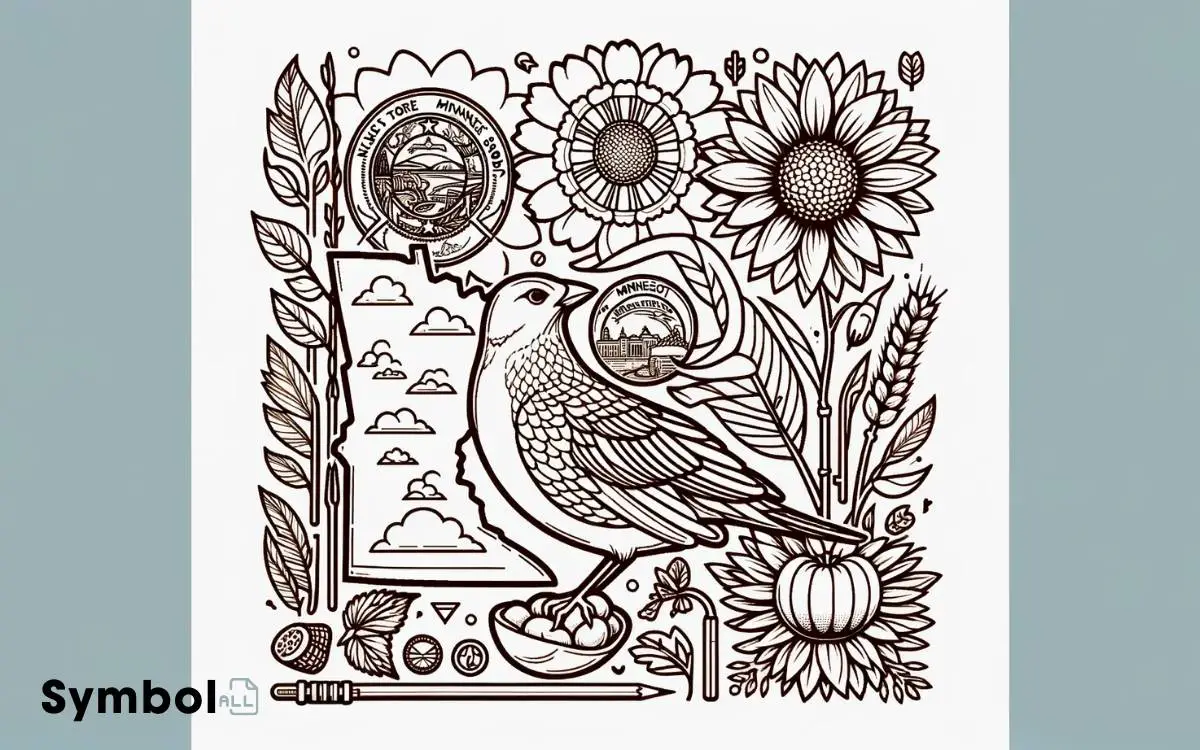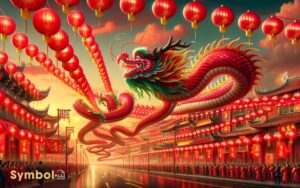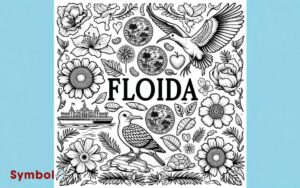Minnesota State Symbols Coloring Pages: Explain!
Get ready to explore Minnesota’s state symbols coloring pages! Grab your crayons to bring the Common Loon to life, it’s known for its eerie calls and glides on the lakes.
Don’t forget the Lady Slipper, a rare flower symbolizing resilience, and the fierce Walleye, a favorite among local anglers. The towering Norway Pine and the vibrant Monarch butterfly also await your artistic touch.
Explore the significance of each symbol, from the wild rice harvested in traditional ways to the unique Morel mushroom found in spring.
Each page is a gateway to discovering Minnesota’s rich heritage and natural beauty. You’ll uncover more layers to these symbols as you color your way through.

Key Takeaways
10 Minnesota State Symbols Coloring Pages
| Symbol | Type | Description |
|---|---|---|
| Common Loon (Gavia immer) | State Bird | Minnesota’s state bird since 1961, known for its eerie calls. |
| Norway Pine (Pinus resinosa) | State Tree | Designated as the state tree in 1953, symbolizing Minnesota’s rich forest history. |
| Pink and White Lady Slipper (Cypripedium reginae) | State Flower | Adopted in 1902, this orchid thrives in Minnesota’s wetlands. |
| Monarch Butterfly (Danaus plexippus) | State Butterfly | Became the state butterfly in 2000, a beloved migratory insect. |
| Blueberry Muffin | State Muffin | Declared in 1988, highlighting the importance of wild blueberries in local cuisine. |
| Morel Mushroom (Morchella esculenta) | State Mushroom | Officially recognized in 1984, a favorite among local foragers. |
| Walleye (Sander vitreus) | State Fish | Known for its popularity among anglers, the walleye became the state fish in 1965. |
| Honeycrisp Apple | State Fruit | Bred at the University of Minnesota, it became the state fruit in 2006. |
| Milk | State Drink | Minnesota’s dairy industry is honored with milk as the state drink since 1984. |
| Eastern Timber Wolf (Canis lupus lycaon) | State Mammal | The grey wolf was designated the state mammal in 1974, representing Minnesota’s wildlife. |
Minnesota State Bird
The common loon, with its distinctive black-and-white plumage and haunting calls, proudly serves as Minnesota’s state bird.
You’ll often find these elegant creatures gliding gracefully across the state’s myriad lakes, their eerie calls echoing through the twilight.
Not only does the loon’s presence signify the health of aquatic environments, but it also embodies the wild spirit of Minnesota’s natural landscapes.
As you set out to color your Minnesota State Symbols coloring pages, capturing the loon’s intricate patterns can be both a challenge and a delight.
Pay close attention to the sharp contrast between its black head and white underbelly, and don’t forget the striking red eyes that pierce through the water’s surface.
Embracing this task, you bring a piece of Minnesota’s essence to life.
State Flower: Lady Slipper
Draped in mystery and beauty, the Lady Slipper, Minnesota’s state flower, captivates with its unique shape and vibrant colors, inviting you to bring its elegance to life on your coloring page.
Declared the state flower in 1902, this orchid symbolizes rarity and resilience, thriving in Minnesota’s varied habitats.
As you color, note its distinctive pouch-like petal, a haven for pollinators. The Lady Slipper takes years to bloom, reflecting patience and perseverance.
With shades ranging from soft pinks to bold magentas, your artistic interpretation can mirror the natural diversity of this enchanting bloom.
The State Fish: Walleye
Now, let’s turn our attention to the state fish of Minnesota, the Walleye.
You’ll find that their habitat spans across cool, clear waters, making them a favorite among local anglers.
We’ll also uncover the best techniques to catch these elusive fish, enhancing your fishing adventures in Minnesota’s lakes and rivers.
Walleye Habitat Range
Walleye, recognized as Minnesota’s state fish, thrive in cool, freshwater habitats across the northern United States and Canada.
You’ll find them moving stealthily in the murky depths of lakes and rivers, preferring water temperatures between 65 and 75 degrees Fahrenheit.
These elusive creatures are skilled at traversing the clear to slightly turbid waters, making their homes in areas abundant with aquatic plants and rocky substrates.
They’re not just confined to the wild; walleye are also a popular choice for stocking in man-made reservoirs, expanding their range even further.
Their adaptability to different freshwater environments makes them a fascinating subject for anyone interested in the aquatic life of Minnesota and beyond.
Remember, understanding their habitat is key to appreciating why the walleye holds such a special place in the heart of Minnesotans.
Fishing Techniques Explained
Understanding the habitat of Minnesota’s state fish sets the stage for mastering the art of walleye fishing, a skill that combines patience, technique, and knowledge of this elusive creature’s behavior.
You’ll find walleye in the cool, deep waters during daylight, making early morning or late evening the prime times for casting your line. Use live bait like minnows or leeches, as walleye can’t resist these.
Jigging and trolling are effective techniques; the former allows for precise positioning of your lure in deeper waters, while the latter covers vast areas, increasing your chances of a catch.
Remember, walleye are cunning, but with the right approach, you’ll enjoy the thrill of reeling in this prized fish. Stay patient, and you’ll master walleye fishing in no time.
Minnesota State Tree: Norway Pine
You’re about to explore the Norway Pine, Minnesota’s esteemed state tree. Known for its towering presence and robust characteristics, this pine plays an essential role in the state’s natural landscape.
Understanding its significance to Minnesota will deepen your appreciation for this majestic tree.
Norway Pine Characteristics
The Norway Pine, known for its tall and sturdy stature, stands as Minnesota’s proud state tree, embodying the state’s natural beauty and resilience.
You’ll recognize this conifer by its long, slender trunk that can soar up to 150 feet, making it a giant among the forests. Its needles, in bundles of two, are dark green, adding a vibrant contrast against snowy landscapes.
The Norway Pine’s bark is another distinctive feature, with its reddish-brown hue that deepens with age. This tree isn’t just about looks; its strong wood is highly valued for construction and carpentry.
Adaptable and hardy, the Norway Pine thrives in a variety of soils, though it prefers sandy or well-drained sites. This resilience and versatility make it a true symbol of Minnesota’s wild and varied nature.
Importance to Minnesota
Embodying the spirit of resilience and natural beauty, Minnesota’s state tree, the Norway Pine, holds a special place in the heart of the state’s identity and history.
You’ll find it not just standing tall in forests, but also in the essence of Minnesota’s culture and traditions. It’s a living symbol that ties Minnesotans to their natural heritage and reminds them of the beauty surrounding their everyday lives.
| Aspect | Importance to Minnesota |
|---|---|
| Identity | Symbolizes state’s resilience and beauty |
| Economy | Crucial to the lumber industry |
| Environment | Provides habitat for wildlife |
Through its towering presence and ecological significance, the Norway Pine enriches Minnesota’s landscapes and the lives of its people, making it an emblem of pride and natural splendor.
State Butterfly: Monarch
Minnesota’s state butterfly, the monarch, captivates with its vibrant orange-and-black wings, inviting you to explore its significance and beauty.
Designated as the state butterfly in 2000, the monarch is more than just a pretty face. It plays an essential role in pollination, helping flowers and crops thrive throughout Minnesota.
This magnificent insect begins on an incredible migration journey, traveling thousands of miles from Mexico to Minnesota each spring, symbolizing resilience and determination.
By understanding the monarch’s importance, you’re not just appreciating its aesthetic appeal but also recognizing its contribution to the state’s ecological balance.
The State Grain: Wild Rice
You’ll find wild rice holds a special place in Minnesota’s heart, not just as its state grain but also for its cultural and ecological significance.
Learning about the traditional and modern methods of harvesting this aquatic plant reveals a fascinating blend of history and innovation.
It’s a staple that connects the past to the present, making it an intriguing topic for anyone interested in the state’s heritage.
Wild Rice Significance
Wild rice, designated as the state grain, holds a place of distinction in Minnesota’s cultural and natural heritage.
This unique crop is more than just a dietary staple; it’s a symbol of the state’s rich ecosystems and the ancient traditions of the Native American tribes who’ve harvested it for centuries.
For Minnesotans, wild rice is a point of pride, representing a connection to the land and its history. It’s not merely food but a cultural emblem, showcasing Minnesota’s commitment to preserving both its natural resources and indigenous heritage.
You’ll find wild rice celebrated in local festivals, featured in traditional dishes, and protected through conservation efforts. It’s a reflection of the state’s reverence for its natural bounty and the diverse cultures that cherish it.
Harvesting Methods
Harvesting wild rice requires unique methods that reflect the grain’s deep connection to Minnesota’s natural landscapes and indigenous traditions. You’ll find the process fascinating and quite different from harvesting other grains.
Traditionally, gatherers use a canoe to navigate through the wild rice waters. As you gently push through, you’ll need a pair of sticks; one to bend the stalks over your canoe and another to gently knock the ripe grains off.
This method, known for its simplicity and regard for nature, guarantees only the ripe grains are harvested, leaving the rest to mature or fall naturally to reseed the waterbed.
It’s a beautiful, eco-conscious approach that honors the grain’s significance and sustains its presence in Minnesota’s lakes and rivers.
State Mushroom: Morel
Distinguished as Minnesota’s state mushroom, the morel offers a unique foraging experience that delights both amateurs and seasoned gatherers alike.
These elusive fungi are highly sought after for their distinctive taste and appearance. Found in wooded areas during the spring, morels thrive in moist soil, often near decaying trees.
You’ll recognize them by their honeycomb-like surface, which sets them apart from other mushrooms. Foraging for morels isn’t just about the hunt; it’s about connecting with nature and enjoying the outdoors.
Remember, while morels are a culinary treasure, they’ve look-alikes that can be harmful. Always confirm your finds with an experienced forager or through reliable resources.
Embrace the adventure of searching for Minnesota’s cherished state mushroom, and you might just discover a new passion.
Minnesota State Gemstone: Lake Superior Agate
You’re about to uncover the wonders of the Lake Superior Agate, Minnesota’s prized state gemstone.
We’ll explore how its stunning colors come to life through a fascinating formation process and pinpoint the best locations to find these natural treasures.
Get ready to learn what makes this gemstone a colorful emblem of Minnesota’s geological beauty.
Formation Process
The formation process of the Lake Superior Agate, Minnesota’s state gemstone, began over a billion years ago with volcanic eruptions that occurred in the region. These eruptions spewed out basalt, a type of lava that cooled and hardened over time.
As the Earth’s surface changed, cracks formed in the basalt layers, creating perfect pockets for silica-rich water to seep in. Over millions of years, this silica solution cooled and crystallized, layer by layer, inside these cavities.
The result? The stunningly beautiful Lake Superior Agate. It’s a process that took an unimaginable amount of time, shaping what would become a symbol of Minnesota’s natural beauty.
You’re witnessing the result of nature’s patience and its incredible ability to create wonders.
Unique Colors Explained
Every hue and band you see in the Lake Superior Agate tells a unique part of its million-year story, blending chemistry and time to create its mesmerizing colors.
The red, orange, and yellow bands are the result of iron seeping into the agate during its formation, a process that took countless ages. This iron, reacting with oxygen, gives the gemstone its warm, fiery tones.
Meanwhile, the cooler blues and greens arise from copper and other mineral inclusions, adding to the stone’s stunning variety. It’s not just a gem; it’s a timeline of geological history, captured in vivid color.
Each Lake Superior Agate is a natural masterpiece, with no two exactly alike, making them a fascinating subject for anyone interested in the natural world.
Finding Locations
While searching for the Minnesota State Gemstone, Lake Superior Agate, it’s important to know that these geological treasures are primarily found along the shores of Lake Superior.
Your quest might take you to the beautiful, rocky beaches where waves have smoothed these agates over time, making them easier to spot.
Look for their distinctive banded patterns, a mix of red, orange, and yellow hues, which stand out against the usual stones. Public beaches and riverbanks in northeastern Minnesota are your best bet.
Always remember, while it’s exciting to find these natural beauties, respect the environment and local regulations. With patience and a keen eye, you’ll likely discover your very own piece of Minnesota’s geological heritage. Happy hunting!
State Mammal: Gray Wolf
Often spotted roaming the vast wilderness of Minnesota, the gray wolf stands proud as the state’s official mammal. This majestic creature, with its thick fur coat, is a symbol of Minnesota’s rich biodiversity and commitment to wildlife conservation.
As you color in the gray wolf on your page, remember it’s not just about filling in the lines; it’s about understanding the importance of this animal in maintaining the balance of ecosystems.
The gray wolf’s presence signifies healthy forests and abundant wildlife, playing a critical role as a top predator.
It’s a reminder of the wild beauty that still thrives in parts of the state, and why efforts to protect these magnificent animals and their habitats are so essential.
The State Insect: Honeybee
Buzzing with activity, the honeybee, Minnesota’s state insect, plays an essential role in pollinating plants and supporting the state’s diverse ecosystems.
As you immerse yourself into your coloring page, you’re not just bringing to life any insect; you’re coloring a creature that’s important for the growth of many fruits and vegetables.
Honeybees are fascinating workers, traveling from flower to flower, collecting nectar to make honey, and in the process, they pollinate plants.
This not only benefits the flora but also the entire food chain, including humans. Without these industrious insects, Minnesota’s landscapes would be vastly different.
State Drink: Milk
Plunge into your next coloring page featuring milk, Minnesota’s official state drink, a symbol of the state’s rich agricultural heritage and a staple in American diets.
When you’re bringing this page to life, remember you’re not just coloring any beverage; you’re adding hues to a drink that represents:
- The Importance of Minnesota’s Farms: Over 6,000 dairy farms contribute to making milk the state drink since 1984.
- Nutritional Value: Milk is packed with essential nutrients including calcium, vitamin D, and protein.
- Cultural Significance: Beyond nutrition, milk has been a part of family meals, school lunches, and local recipes, weaving itself into the fabric of daily life in Minnesota.
As you color, think about the impact of milk on Minnesota’s identity and your own connection to this wholesome beverage.
Minnesota State Fruit: Honeycrisp Apple
After coloring the pages dedicated to milk, turn your attention to the Honeycrisp apple, Minnesota’s state fruit, celebrated for its perfect balance of sweet and tart.
Developed by the University of Minnesota specifically for the state’s climate, this apple variety quickly became a favorite for its crisp texture and unique flavor profile.
As you fill your coloring page with shades of red and yellow, remember that the Honeycrisp apple represents not just Minnesota’s agricultural innovation but also its commitment to producing quality, flavorful produce.
This apple isn’t just a treat to eat; it’s a symbol of the state’s dedication to excellence in agriculture.
State Photograph: Grace
Turn your gaze to ‘Grace,’ the stunning photograph designated as Minnesota’s state photograph, capturing the essence of the state’s breathtaking natural beauty and serene landscapes.
This iconic image isn’t just a feast for the eyes; it’s a symbol of Minnesota’s rich cultural heritage and the deep connection its people have with their environment.
Here’s why ‘Grace’ is so special:
- Historical Significance: It’s not just a photograph; it’s a piece of Minnesota’s history, embodying the state’s values and traditions.
- Artistic Merit: ‘Grace’ showcases exceptional artistic vision, with composition and lighting that draw viewers into a moment of pure tranquility.
- Emotional Impact: It resonates on a deep emotional level, evoking feelings of peace and contemplation among those who view it.
Dive into the story of ‘Grace’ and let it inspire your appreciation for Minnesota’s natural and cultural landscape.
The North Star Emblem
Shining brightly as a beacon of guidance, Minnesota’s North Star Emblem symbolizes the state’s history, values, and aspirations.
You’ll find this emblem not just a symbol, but a part of Minnesota’s identity, encapsulating the spirit and direction of the North Star State.
| Aspect | Significance |
|---|---|
| Star | Guidance and progress |
| Blue Color | Stability and reliability |
| Motto | “L’Étoile du Nord” or “The Star of the North” |
This emblem isn’t just for show; it’s a reminder of where Minnesota stands and where it’s headed. As you color the North Star Emblem, think about its meaning, reflecting on how it represents Minnesota’s ongoing journey towards growth and excellence.
It’s more than just a symbol; it’s a story of aspiration and achievement.
Conclusion
As you color each symbol, from the majestic Norway Pine to the delicate Lady Slipper, you’re not just filling in lines; you’re embracing Minnesota’s heart and soul.
Imagine the Monarch’s flutter echoing the state’s spirit, the Walleye swimming through your dreams, and the Honeycrisp Apple’s sweetness reflecting Minnesota’s charm.
Let each stroke of color celebrate the state’s natural beauty and heritage, binding you closer to the North Star State’s rhythm, from the serene Grace photograph to the nourishing glass of milk.






